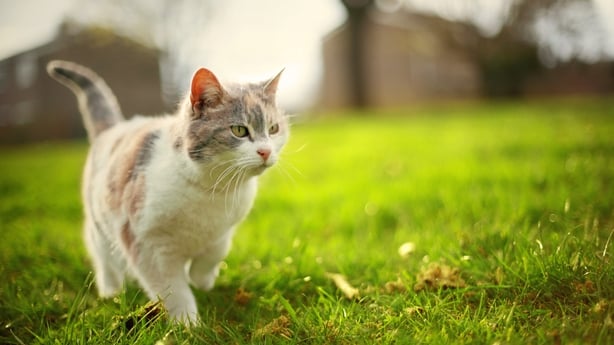We know all the ways that a cat or dog shows their affection, from purring and licking, to giving the paw and curling up on your lap. But how do you tell when they're in pain or distress?
Even the most seasoned pet owners can be thrown for a loop when it comes to spotting that their pet isn't themselves. With this in mind, Sarah Boland, a vet from Clane in Co. Kildare, joined Today with Claire Byrne to discuss the signs to look out for in your pet if they're in pain.
Boland said there's "very little overlap" in how our four-legged friends show pain and how we do.

"More often than not, our pets' pain is progressive and it could be chronic like arthritis or toothache or back pain, so the signs are a lot more subtle because they've evolved to hide pain so that they don't appear weak to the pack."
Stiffness, limping, lack of desire to go on walks, not jumping on the sofa or going up and down the stairs, licking at a joint, or being slow to eat are some of the signs of pain in dogs. With cats, Boland said "they deal with pain slightly differently, they get more stressed from it".
Over-grooming to the point of developing bald patches, matted hair along their backs from being unable to turn and wash themselves, slow movements, and stiffness are among the signs for cats.
When it comes to the types of pain to be aware of, Boland said there are two categories: acute pain such as sudden pain from a fall or if they were injured on the road, and chronic pain. "Chronic pain is something that most pets at some point in their life, if they live to old age, will experience", Boland said.
Arthritis or dental disease would be the two most common conditions vets would see that affect both cats and dogs, as well as rabbits, guinea pigs, and other small animals.

Dental pain is "very often missed", Boland added. "As humans, we think that if there was a pain in their mouth they wouldn't eat but it actually takes a lot for our pets to stop eating."
She said subtle signs like chewing from the side of their mouth, dropping food, smelly breath and drooling a lot are the ones to look out for.
Boland suggested a complete dry food diet for dogs to protect their dental health, as "it's designed to crack over their teeth in a way that encourages the plaque to be dissipated rather than to build up".
Additives can be added to their water to break down the starting stages of plaque build-up, and Boland suggested getting regular dental check-ups with their vet.
For more tips on how to care for our pets, listen back to the full interview above.

